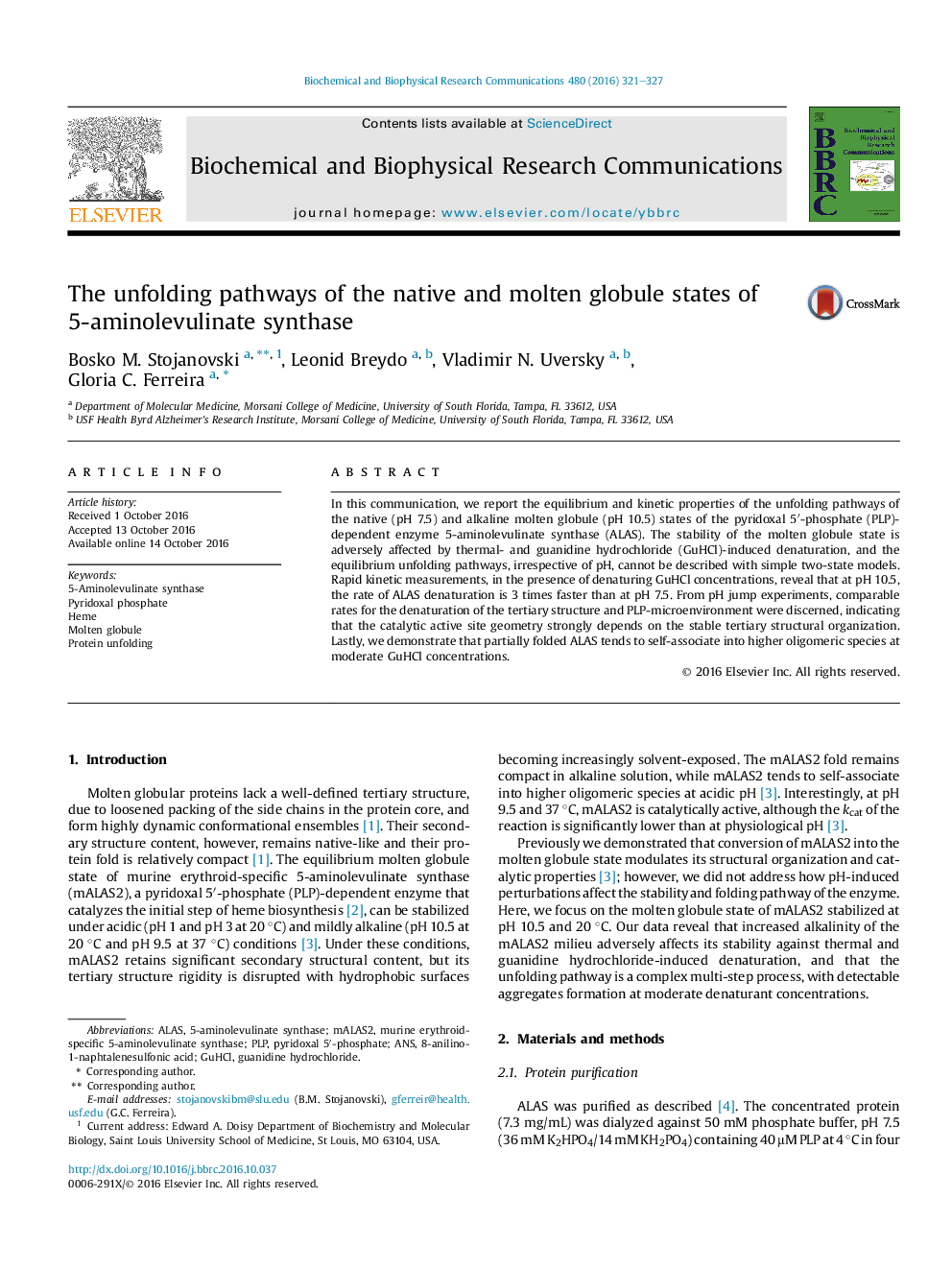| Article ID | Journal | Published Year | Pages | File Type |
|---|---|---|---|---|
| 5506581 | Biochemical and Biophysical Research Communications | 2016 | 7 Pages |
â¢The unfolding pathways of native and molten globular mALAS2 were characterized.â¢Molten globular mALAS2 is less stable than mALAS2 vs thermal- and GuHCl-denaturation.â¢The unfolding pathways are complex multi-step processes, irrespective of pH.â¢The catalytic active site geometry depends on stable tertiary structural organization.â¢ALAS is prone to aggregation at moderate concentrations of denaturant.
In this communication, we report the equilibrium and kinetic properties of the unfolding pathways of the native (pH 7.5) and alkaline molten globule (pH 10.5) states of the pyridoxal 5â²-phosphate (PLP)-dependent enzyme 5-aminolevulinate synthase (ALAS). The stability of the molten globule state is adversely affected by thermal- and guanidine hydrochloride (GuHCl)-induced denaturation, and the equilibrium unfolding pathways, irrespective of pH, cannot be described with simple two-state models. Rapid kinetic measurements, in the presence of denaturing GuHCl concentrations, reveal that at pH 10.5, the rate of ALAS denaturation is 3 times faster than at pH 7.5. From pH jump experiments, comparable rates for the denaturation of the tertiary structure and PLP-microenvironment were discerned, indicating that the catalytic active site geometry strongly depends on the stable tertiary structural organization. Lastly, we demonstrate that partially folded ALAS tends to self-associate into higher oligomeric species at moderate GuHCl concentrations.
